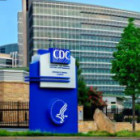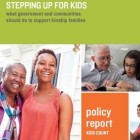
Major Juvenile Service Cuts Coming to Utah as Part of State’s Legislative Budget
|
After the loss of key federal funding and the end of a stopgap measure, state lawmakers in Utah are cutting the budgets of agencies providing crucial services to juvenile services. After a federal decision to suspend funding of non-medical expenditures associated with residential care was made two years ago, Utah legislators provided its state agencies - such as Juvenile Justice Services (JJS) and Division of Child and Family Services (DFCS) - with emergency stopgap funds. This legislative session, however, stopgap funding for juvenile services programs ceased, with state legislators issuing an additional $3.2 million in budget cuts. The impact of the federal decision on Utah was severe, costing the state an estimated $27 million in Medicaid funding. In the process, Utah’s JJS ended up losing an estimated $9 million per year, with the state DFCS agency losing an estimated $18 million annually.








